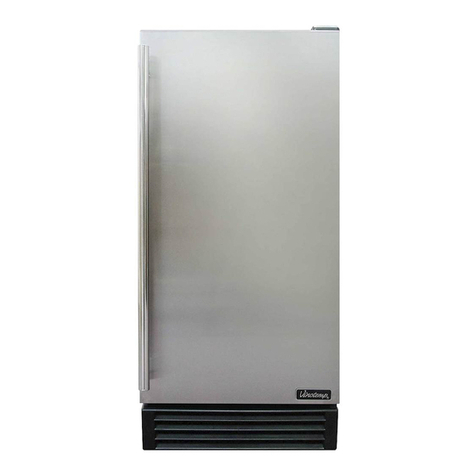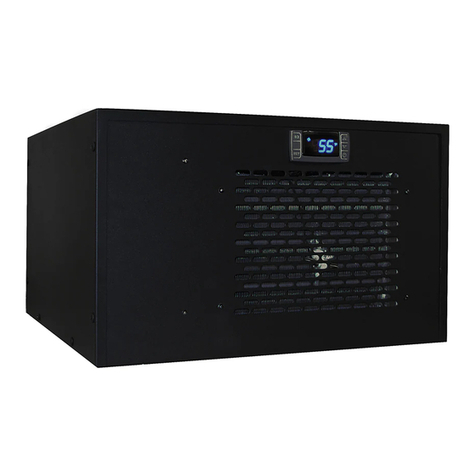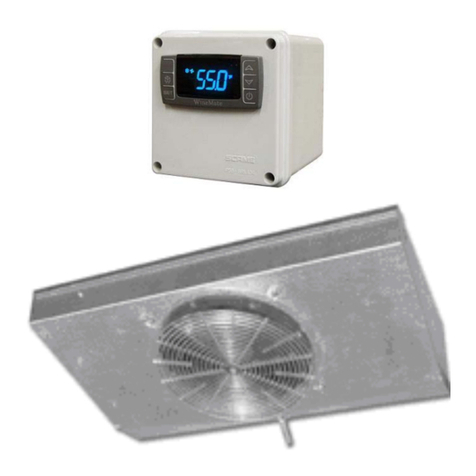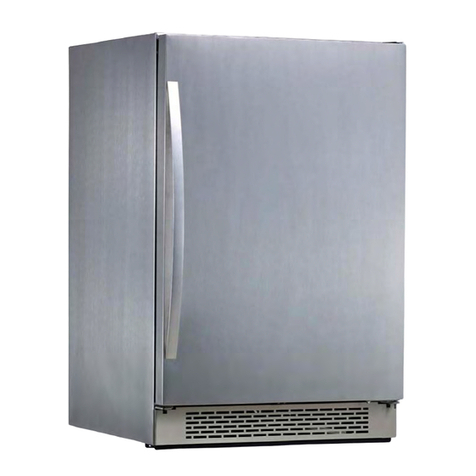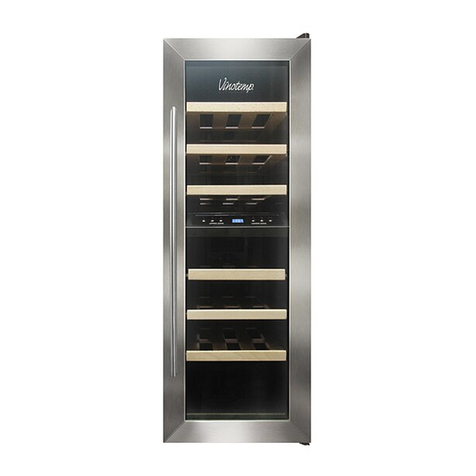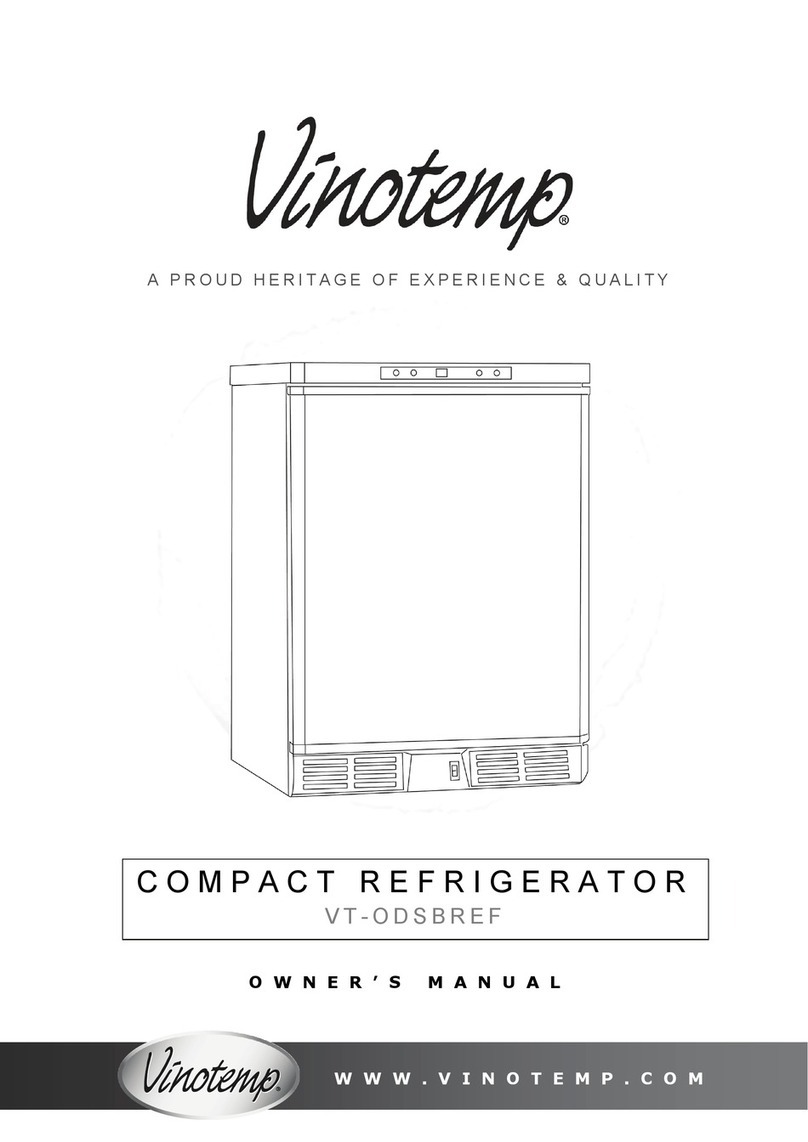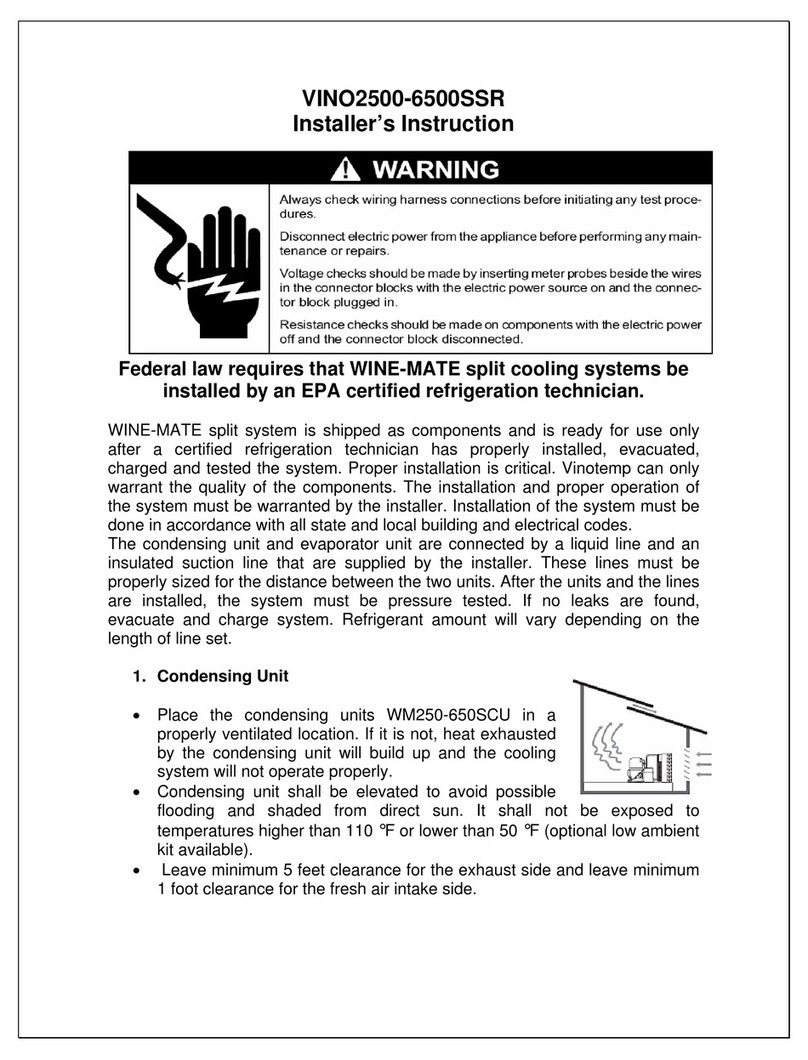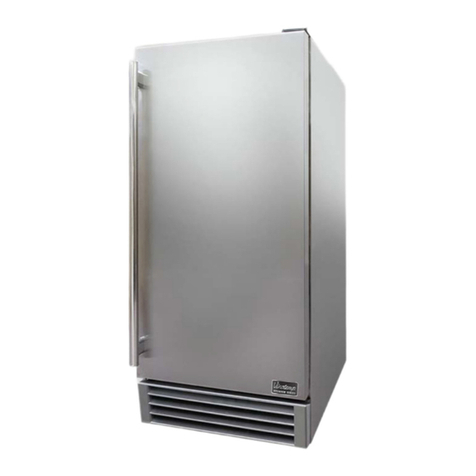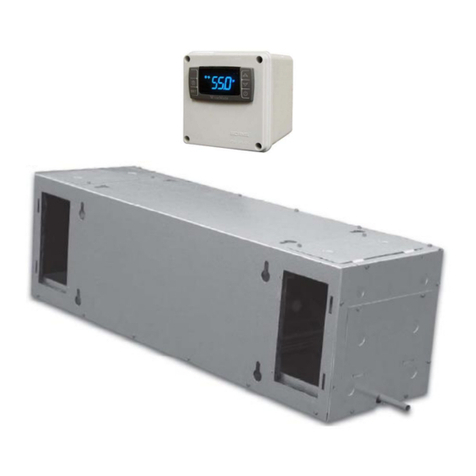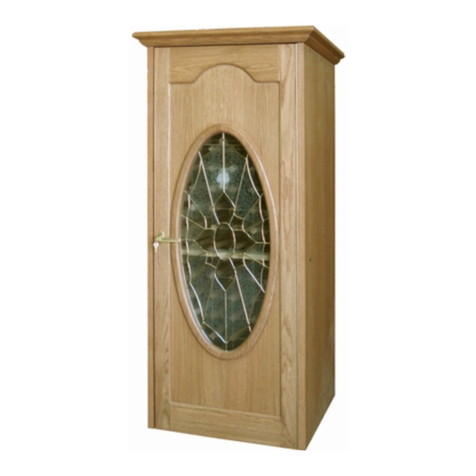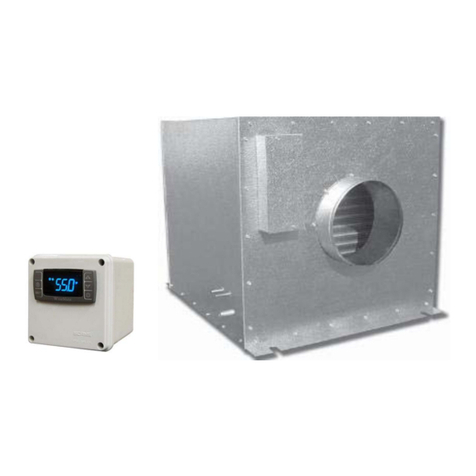
- 7 -
1. Location
•Place the unit in a properly ventilated location. If it is not, heat exhausted
by the condensing unit will build up and the cooling system will not operate
properly.
•Cooling unit shall be elevated to avoid possible flooding and shaded from
direct sun. It shall not be exposed to temperatures higher than 110 °F or
lower than 50 °F (optional low ambient kit available).
•Leave minimum 5 feet clearance for hot air exhaust and leave minimum 1
foot clearance for the fresh air intake.
•There is a gravity drain line and the unit shall be installed level or with a
slight angle toward the drain connection.
•Supply air flow shall be unobstructed for at least 12” for free installation or
2” for deflector installation and return air shall be unobstructed for 6”.
•Overall combined supply + return or exhaust + intake duct length can be
up to 50 ft long.
2. Mounting
•The unit must be mounted on a floor or slab that is level and strong
enough to support up to 300lb.
•There are six ½” bolts required to secure the unit base.
3. Customer Wiring
•Use 14 AWG wires
•If it is VINO4500DS without low ambient kit, go to the next step. Connect
the wires in the outlet box of the condensing unit to the power lines
•Connect the wires in the outlet box of the evaporator unit to the
temperature controller and then connect the controller to the power lines.
4. Air Sensor and Temperature Controller
•The air sensor is recommended to place in the wine room 5 ft above the
floor but not air dead area.
•If it is in a return duct, the evaporator fans shall be running all the time.
Due to the temperature differential the temperature setting needs to be
adjusted in order to maintain the proper wine room temperature.
•If the temperature controller is mounted away from the air sensor, use 18
gauge wires to extend the air sensor if needed.
5. Air Flow (Evaporator unit)
•It is necessary to check the air flow to meet the specified CFM. It may use
fan speed control to adjust the system refrigeration performance to
achieve 8-10°F differential between return air and supply air while wine
room temperature is maintained 55°F. Turn the control knob clockwise to
decrease the air flow or counter-clockwise to increase the air flow.
